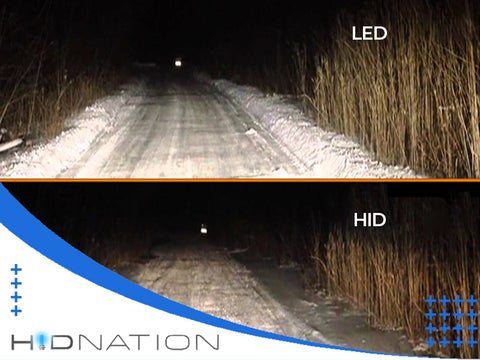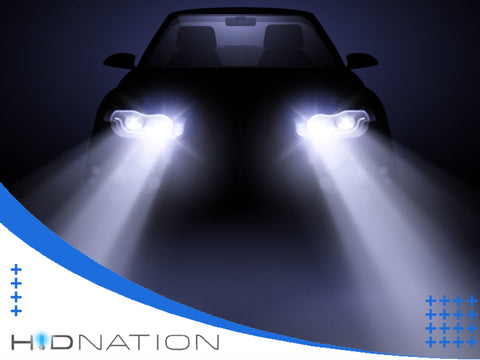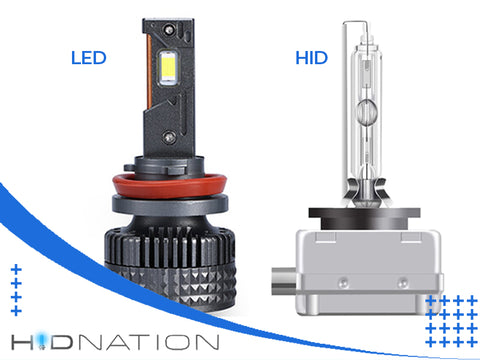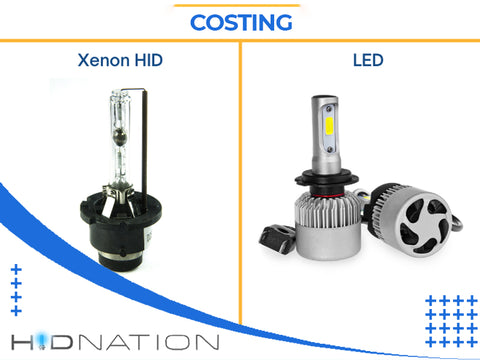LED lights are a popular upgrade for drivers that want to improve their visibility while driving at night. They use a unique process to produce light and are commonly used in fog lights and other accessories.
Furthermore, they work by running negative electrons against holes in a semiconductor to create light. They can also offer a range of colors and are relatively inexpensive.
Brightness
LED lights are a good choice if you want your car’s headlights brighter than the halogen bulbs that come with your vehicle. They are 30% brighter than halogen lights and can last up to 45,000 hours. They also use less energy than halogen bulbs. In addition, they can be purchased as an upgrade from your auto dealer or as a conversion kit. They can also be shaped to produce a more focused beam.
HID lights are also an excellent option for those who want their headlights brighter. These lights are more expensive than LED headlights but can last up to 3 times longer. They also offer a more comprehensive range of colors than LEDs. However, you should note that the brightness of these headlights can cause glare for other drivers.

Xenon HID lights pass an electrical charge through a xenon gas in a vacuum between two electrodes. The resulting arc produces an intense white or bluish light. These lights are much brighter than traditional halogen bulbs, but they can cause glare for other drivers on the road.
The brightness of these lights can also be a problem for drivers in cold and snowy climates, as they can melt snow on your windshield and reflect off the road.
LEDs have several advantages over Xenon HID headlights, including lower power consumption and better brightness.
Another advantage of LEDs is that they are easy on your vehicle’s engine. They don’t drain the battery or require a starter motor, so they can help you save money on fuel costs. Lastly, they are more durable than halogen headlights and more shock-resistant.
Durability
As innovations in car lighting continue to evolve, the technology behind headlights has become more advanced and efficient. LED lights, for example, can convert more energy into light and last longer than traditional halogen bulbs. In addition, LEDs are available in a broader range of colors and can offer greater flexibility for drivers. As a result, LED headlights are becoming more popular for new cars and people looking to upgrade their existing halogen bulbs.

Despite their many benefits, however, LED headlights do have some disadvantages.
- First, they are not as bright as HID headlights. This is important because it can affect visibility and cause glare for oncoming drivers. Fortunately, this problem can be avoided by using high-beam control devices on your vehicle.
- Another drawback is that they can produce too much heat, damaging the bulbs and causing the engine to overheat. This is a severe issue that should be considered when choosing a headlight system for your vehicle. Finally, LEDs require a cooling component to prevent the diodes from melting. This can add to the cost of the bulb.
HID headlights can convert more energy into light and last up to 15,000 hours. They can also provide a brighter, whiter light than halogen bulbs. However, despite their advantages, HID lights can cause glare and blind oncoming drivers. As a result, it is best to use these headlights on the highway and not in urban areas.
Lightweight
LED headlights use a unique process to produce light. Negative electrons run into holes in a semiconductor to create a photon of light called electroluminescence. This occurs thousands of times per second, producing the intense brightness we associate with LED headlights.
While HID bulbs may be brighter than halogen headlights, they can drain more power from your vehicle's electrical system. This can lead to a shorter battery life. Additionally, the xenon gas that HID bulbs use can lose its charge over time. This can reduce their brightness over time, and it will take longer for them to warm up than a halogen bulb.

HID headlights also have a higher maximum beam distance than halogen headlights. This allows them to illuminate a much larger area. This is especially beneficial for those who often drive on the highway. Ultimately, the choice between halogen, HID, and LED headlights will depend on your needs and driving style.
LED headlights are compact and slightly more energy efficient than HID headlights. They are less expensive than Xenon bulbs and require no ballast. Additionally, they provide instant light as soon as they're turned on. The lag sometimes associated with HID bulbs is not an issue with LED headlights.
Upgrading your headlights from halogen to LED vs HID headlights is an easy way to improve visibility while making your car more attractive. These upgrades can be done at a fraction of the cost of purchasing a new vehicle. If you have any questions about the best headlight upgrade for your car, be sure to contact a professional. The professionals at HID Nation can help you with all of your automotive needs, from routine maintenance to major repairs.
Cost
LED vs HID headlights are more expensive, but the investment is worth it. However, you should consider other options if you are on a budget.
These bulbs use small semiconductor chips to produce light. Negative electrons run against holes in the semiconductor, creating light-emitting diodes (LED). They are a more affordable option than other headlights, but they don’t last as long. In addition, they can create glare for oncoming traffic. The LED lights are smaller than other headlights, fitting into smaller spaces. They also consume less energy, which helps reduce fuel consumption.

Xenon headlights are also an excellent choice for those who want to upgrade their car’s lighting system. Xenon headlights are much more powerful than halogen bulbs, producing more light and larger beam area. In addition to being brighter, they are more compact and easier to install in most vehicles. They are also more durable than halogen bulbs but don’t have as long a lifespan.
Conclusion
There are many types of headlights, and deciding which is best for you will depend on your driving habits. If you’re a night owl or spend much time driving in rural areas, LED vs. HID headlights may be better for you. These headlights provide a white or bluish glow and illuminate the road better than halogen bulbs. However, they are more expensive than halogen headlights and more likely to blind other drivers. Moreover, HID headlights are difficult to replace.
Read Also: How to Choose the Best Headlight Bulbs for a Toyota Camry, Step by Step
FAQs
Which is More Brighter - HID or LED?
HID lights have excellent source efficiency but lose out to LEDs regarding system efficiency. This is because they emit significant amounts of irrelevant radiation in the form of heat and IR as well as UV.
Despite this, they offer incredibly bright light and last much longer than halogen bulbs. The xenon gas that creates this brightness will eventually run out, though, so they will start to fade over time.
Which Lasts Longer, HID or LED?
HID bulbs use a chamber filled with xenon gas, which is charged by high-voltage electrodes and then produces light. Unlike most other lighting technology, HID lights produce very little forward heat.
They're ideal for drivers who drive at night regularly or who live in remote areas with limited street lighting. They don't fade over time and start up instantly, whereas LEDs take a few seconds to reach full brightness.
Which Headlight to Use at Night?
Easily upgrade your car's lights with these brighter, dipped beam bulbs. Featuring a crisp white light and reduced glare, they're street-legal and easy to fit.
Always remember to switch to dipped beams when driving on other road users' lines or following them, as high beams can dazzle them and cause accidents. Always check your dashboard indicator to see what your headlight setting is.



